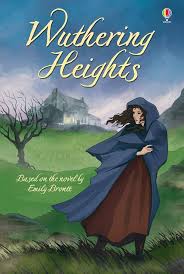Understanding Wuthering Heights: A Timeless Gothic Novel

Introduction to Wuthering Heights
Wuthering Heights, the only novel by Emily Brontë, was published in 1847 under the pseudonym “Ellis Bell.” This iconic work is celebrated for its intricate characters and exploration of themes such as passion, revenge, and the supernatural. The novel remains relevant today not only for its depth but also for its influence on literature and popular culture.
Plot Overview
The story is set in the Yorkshire moors and revolves around the tumultuous relationship between Catherine Earnshaw and Heathcliff, an orphan taken in by Catherine’s father. After her marriage to Edgar Linton, a more socially accepted suitor, Heathcliff’s love turns into an obsession that drives him to seek revenge on those he believes wronged him. The narrative is delivered through the perspective of Mr. Lockwood, a tenant at Thrushcross Grange, as well as Nelly Dean, the housekeeper, providing contrasting viewpoints on the events that unfold.
Themes and Symbolism
Wuthering Heights is notorious for its exploration of love in all its forms—romantic, familial, and vengeful. The titular estate symbolizes the wildness of nature and freedom, while Thrushcross Grange represents order and society. Brontë’s use of the moors as a backdrop emphasizes isolation and the characters’ tumultuous emotions. The novel questions the established norms of class and gender roles, particularly through Catherine’s struggle between her passion for Heathcliff and her desire for social advancement.
Cultural Impact and Adaptations
The legacy of Wuthering Heights has endured through numerous adaptations in film, television, and theatre. From the 1939 film starring Laurence Olivier to recent adaptations, the story’s dark romanticism continues to attract audiences. Scholars and readers alike have analyzed its complex narrative structure and character motivations, ensuring that discussions around Brontë’s work remain lively and insightful.
Conclusion
Wuthering Heights remains a pillar of Gothic literature and continues to resonate with contemporary readers. Its exploration of the human psyche and the complexities of love and revenge offers valuable insights into the nature of relationships. As new adaptations emerge and critical analyses deepen, the enduring significance of Wuthering Heights in the literary canon endures, inviting each generation to confront its powerful themes anew.


